If you’re a professional service and you’re battling to find qualified sales leads, you’re not alone. Many b2b companies struggle with this same problem.
In fact, 91% of marketers say lead generation is their most important goal, and a whopping 80% of new leads never turn into sales.
This article will share expert strategies to help you reach your lead-generation goals.
(If you’re looking for a more tailored approach, why not hop on a free 15-minute strategy session with the founder of Salesbread, Jack Reamer? We help our clients generate 1 qualified sales lead per day by using ultra-personalized LinkedIn outreach.)
1. Really understand your target audience
If you want to boost your sales, you have to really understand WHO your ideal client is. This goes beyond saying, “I want to go after all SEO marketing agencies in the USA.”
If your list of companies or prospects is too broad, you stand the risk of lead gen failure.
So, how do you find the right clients to go after?
Simple…
Look at WHO has bought your product or service within the past 6 months.
By analyzing this data, you will notice certain patterns.
Ask yourself, “What do all my buying customers have in common?”
For example:
-
Have they recently suffered from a PR disaster?
-
Do they all have bad reviews on Yelp?
-
Are these companies a specific size? More than 100 employees? Or less than 10?
-
Which industries are they in? Health and wellness? SaaS? Construction?
-
If they are in health and wellness, which divisions are buying? Hospitals? Clinics? Psychiatric services?
-
Who’s the decision maker? The CEO? VP of finance?
-
Are they using the same CRM tools?
-
Do they have more than 10,000 followers on social media?
-
Where are they located? USA? Europe?
When we build lists for our clients, we actually analyze their current buyer’s data through 34 different filters to find patterns.
When your prospecting lists are super refined, the chances of reaching out to potential clients who will actually buy what you’re selling will be greater.
NOTE: This applies to cold email outreach, LinkedIn outreach, and even cold calling. However, understanding who your buying customers are will help you develop a great digital marketing strategy.
2. Use LinkedIn Outreach

Many people underestimate the power of LinkedIn for marketing. As of 2024, there are 1 billion users on the platform.
This means that you have a huge pool of prospects to reach out to.
Since 2019, SalesBread clients have averaged a 19.98% reply rate with our ultra-personalized LinkedIn lead generation services. And… 48.14% of those replies were either meeting requests or qualified sales inquiries on their product or service.
So, if you haven’t tried LinkedIn yet, you’re missing out on a ton of leads.
Here’s our LinkedIn outreach strategy in a nutshell
We suggest building a prospect list, like we mentioned above.
Once you have that list, you will need to find the right people to reach out to at these companies.
You can do this by using LinkedIn Sales Navigator. However, it’s important to recognize that Sales Navigator’s data can often be inaccurate, so you have to double-check the data.
The video below explains why.
Stats show that LinkedIn Sales Navigator is only 33% accurate.
That’s why we take the extra step to double-verify each prospect to ensure they align with our target criteria. Our data must be 100% accurate before we launch any campaign.
Once you find the right people, you can filter your list by your second-degree network and recently posted.
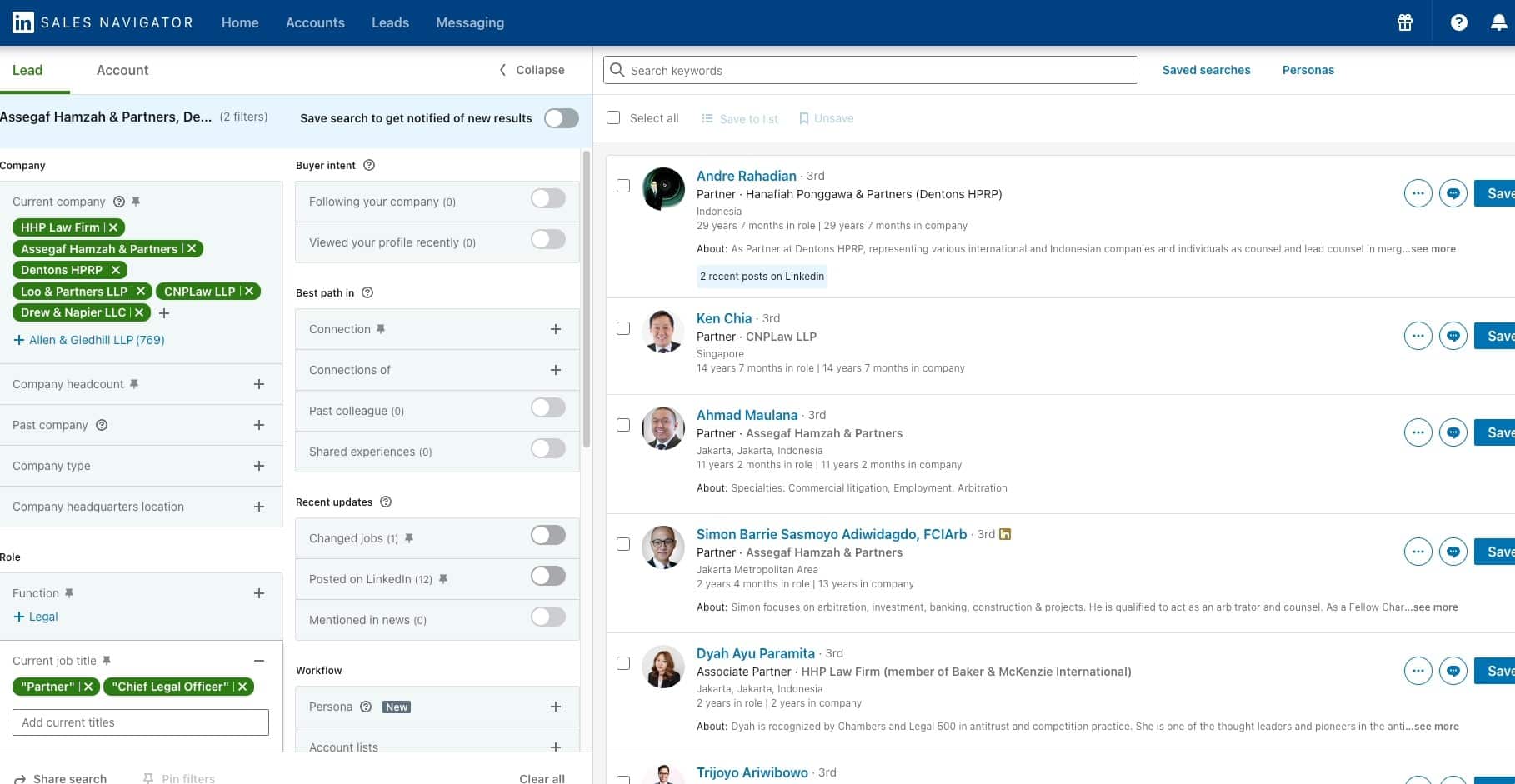
This will help you reach out to prospects who are active on LinkedIn, and prospects who are in your second-degree network will be more willing to reply because you already have a shared connection – something in common.
Once this is done and your list is perfect, you can send your prospects a personalized connection request.
At Salesbread, we do this a little differently.
We don’t just add a first name or a company name.
We actually research each prospect on our list and find something very specific to mention about them in our messaging.
For example:
“Jack, I loved your tear-down episode on enterprise cold emails. I would love to connect with you and hear your thoughts about {{pain point}}?.”
Our CCQ method helps us do this.
You can either find something to compliment the prospect on, mention a commonality, or ask a question.
Does this work?
Here are some replies we have received:
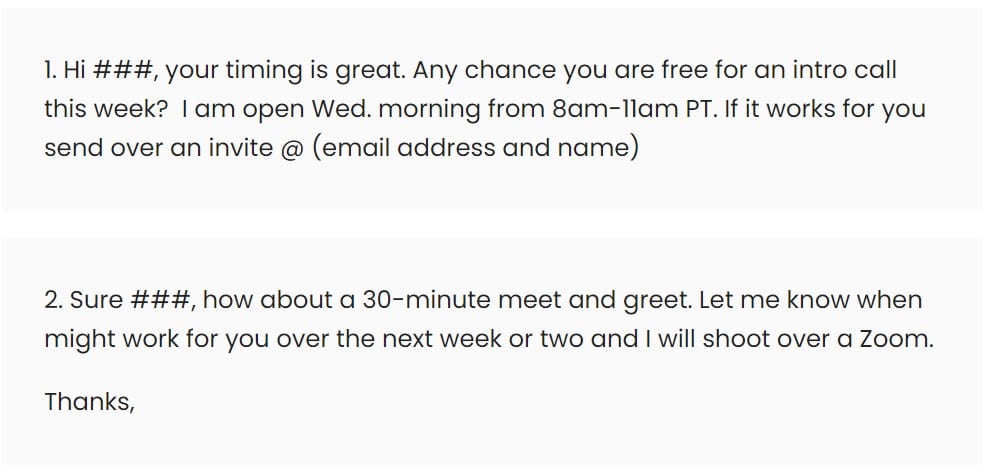
Lastly, follow up consistently and ask for a booked call.
Remember to keep you ask simple. Don’t ask a prospect to hop on an hour-long phone call or make them watch a 3-hour webinar.
Here are some simple yet effective CTAs to use:
-
What’s the best way to schedule 5 minutes to talk?
-
Would you have some time next {{=day}} to discuss?
-
If you find the spec interesting, should we set up a confidential chat?
-
Can we grab time Thursday afternoon to see if [MY COMPANY] aligns with your goals for this year?
-
Are you available for a quick meeting to discuss your use case and see if we can assist in any way?
-
Do you think it could help {{company.name}}? If so, happy to tell you how (here’s my calendar) or show you a demo.
-
Would you be open to a high-level call to learn more?
-
Do you have 10 minutes in the next few days to see how video can generate sales and reduce acquisition costs for {{company.name}}?
(If LinkedIn outreach is something you would like to try in order to find your ideal target client, reach out to us for a free 15-minute strategy session.)
3. Use email marketing
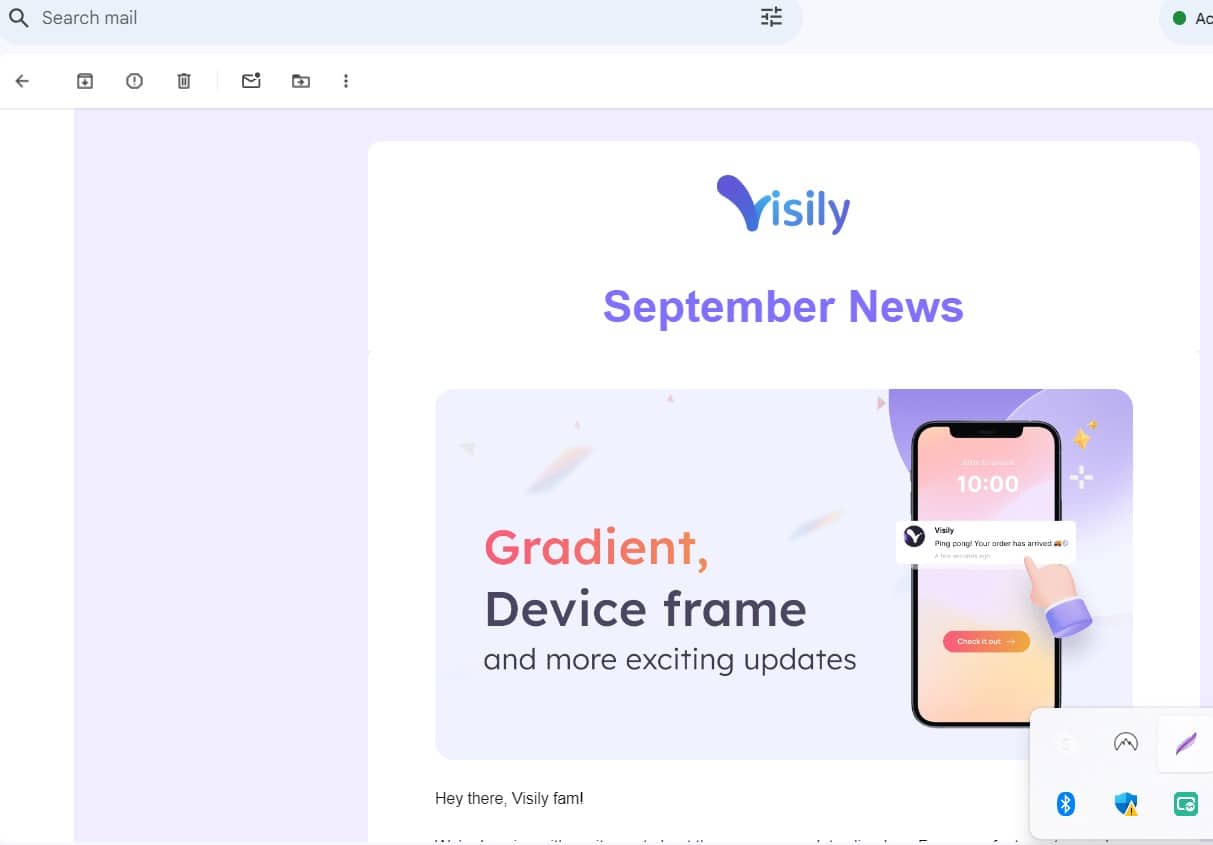
Another way to keep in the minds of your customers is to use email marketing. You could do this by sending a monthly newsletter, or just reaching out to your clients with a personalized email.
If your professional service clients keep seeing your newsletter, and you provide helpful content, that shows your expertise, they might just remember you when they need your services.
It lets you build strong relationships by delivering tailored content, promotions, and updates that are relevant to each recipient.
Plus, with the ability to track open rates, clicks, and conversions, you get immediate feedback on what’s working and what’s not. This will make it easier for you to refine your strategy over time. Whether you’re looking to boost sales, drive traffic to your website, or simply keep your brand top of mind, email marketing can be a powerful professional services lead generation tool.
4. Use online lead-generation techniques
SEO and content marketing

Search engine optimization can be a game changer for making your website more visible to people searching for what you offer.
There are many benefits of SEO — it helps you attract high-quality traffic (if you choose intent-based keywords), improve your credibility (through testimonials and case studies), and ultimately increase conversions.
By optimizing your site’s content and structure, you can rank higher in search engine results, which means more eyes on your business without having to pay for ads.
Creating a strategy involves a few important steps.
First, you need to understand your target audience and what keywords they’re using to find products or services like yours. Then, you can optimize your content around those keywords, ensuring your website is user-friendly and loads quickly.
You can also build quality backlinks and regularly update your content with fresh, relevant information.
Keep track of your performance and adjust your strategy if needed. This will help you stay ahead of the competition and keep your site ranking high.
Social media marketing

(Image provided by SocialPilot)
Social media marketing can help professional services generate leads by sharing valuable content, engaging with your audience, and showcasing your expertise.
You can build trust and credibility with potential clients through testimonials, case studies, and stats.
Platforms like LinkedIn, Twitter, and even Facebook allow you to connect with decision-makers and influencers in your industry, which can expand your network.
With social media, you can also target specific demographics and track your efforts.
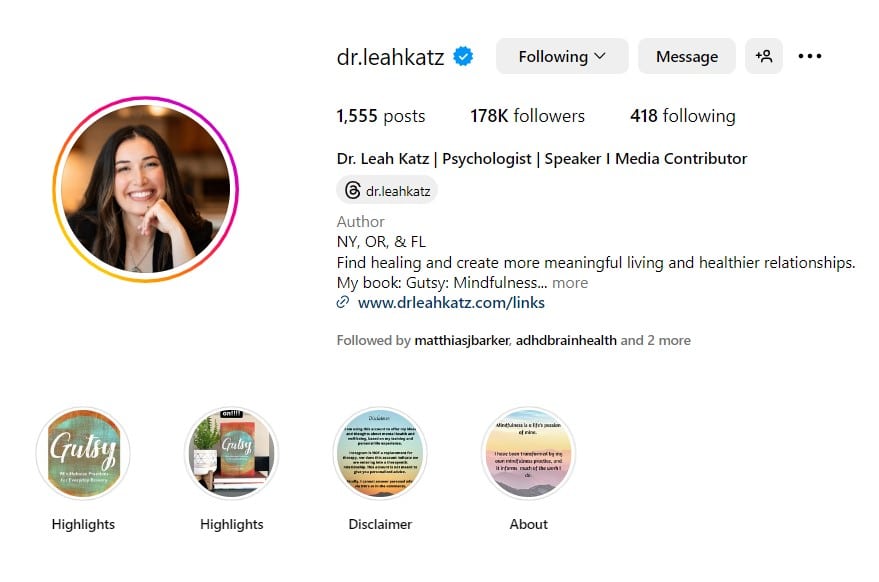
Above is an example of how a psychologist uses Instagram to promote her services and her book.
Notice how she also asks questions in her posts, and this gets engagement going.

Paid Ads
Pay-per-click (PPC) advertising can help get your company or brand at the top of search engine results.
It works by allowing you to bid on specific keywords related to your business, so when someone searches for those terms, your ad appears at the top of the page.
With PPC, you only pay when someone actually clicks on your ad. The only problem is that some people have mentioned competitors click on ads to run up your costs or use up your budget. PPC can be helpful, but you should also be cautious.
For example, we know some companies who hired really expensive PPC advertising companies to run ads on LinkedIn; After spending $10,000, they didn’t even receive 1 lead.
The cost can vary depending on the competitiveness of the keywords you’re bidding on—some might cost just a few cents per click, while others can be several dollars.
5. Use online marketing videos – Like YouTube
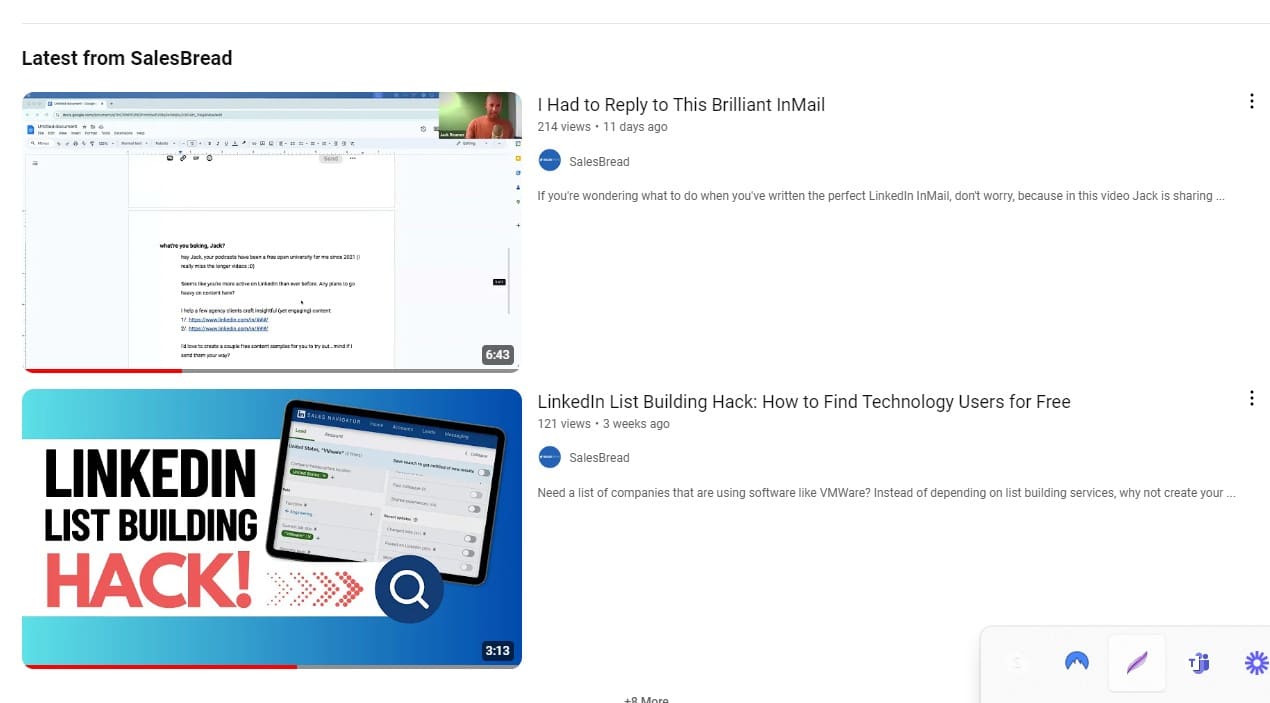
Using online marketing videos on YouTube can definitely boost your lead-generation efforts.
According to The Foundation, a survey was conducted by Animoto, and over 80% of B2C and B2B marketers agree that YouTube content has the ability to drive views, engagement, and purchases for businesses.
Major B2B brands are investing money on YouTube not just for the views, but because it converts. (Source)
Videos allow you to visually showcase your expertise, products, or services, making complex information easier to digest and more engaging for your audience.
YouTube’s vast user base gives you the potential to reach millions of viewers, and with the right content, you can attract the exact audience you’re targeting.
Be sure to include clear calls-to-action and links to your website or landing pages in your videos and descriptions, you can drive traffic directly from YouTube to your business.
Plus, videos are shareable, which means your content can gain traction beyond your immediate reach, creating more opportunities for leads to find you.
6. Go to trade shows

Tradeshows are a great way to network with your ideal clients and help them find you.
For example, in the list below, there are so many professional services that will be at certain trade shows this year.

For example, for Neuroscientists, there will be booths where companies can showcase their cutting-edge tech and products.
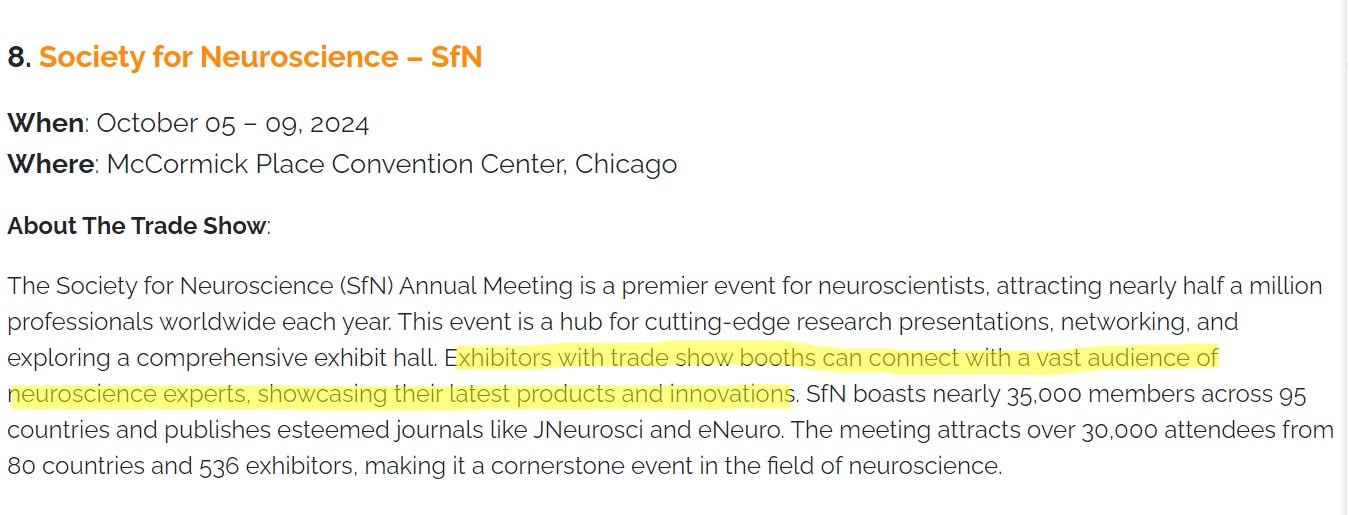
Tradeshows allow you to meet potential clients face-to-face, build relationships, and showcase what sets you apart from the competition.
Being in the same space as your target audience gives you a unique opportunity to engage with them directly and make an impression.
To make your booth stand out, consider creating an inviting and visually appealing space—use eye-catching displays, interactive elements, or live demonstrations to draw people in.
You could offer freebies or host a giveaway, which can also attract more foot traffic. Most importantly, make sure your team is approachable, knowledgeable, and ready to answer questions. Make sure that you capture all data and follow up promptly after the show.
7. Try traditional advertising
You don’t just have to use online lead-generation techniques. Sometimes old school advertising works just as well.
Take a look at the billboard below.

To commemorate World Oceans Day in 2018, Corona teamed up with Wieden + Kennedy for a thought-provoking billboard campaign.
Artist Andy Billett crafted a striking 3D wave using plastic waste collected from across the UK, paired with an image of Chris Hemsworth surfing.
This visual powerfully highlighted the staggering amount of plastic polluting our oceans. The campaign also invited the public to contribute by dropping off their own plastic waste at the site. Similar initiatives were launched in cities like Melbourne, Lima, Santiago, Bogotá, and Santo Domingo.
Traditional advertising is still effective, infact, Billboard ads tend to be more well-received than online ads.
According to OAAA research, 85% of people find out-of-home (OOH) ads, such as billboards, to be useful, whereas a Statista survey reveals that 40% of users find online ads annoying.
Additionally, viewers have a stronger recall of out-of-home ads. Research from OOH Today shows that these ads are more memorable than:
– Print ads
– Online ads
– Podcasts and radio
– Live and streaming television
To read more about Billboard advertising, check out this really helpful article from Hubspot.
8. Hire a reputable lead generation company
If the above lead generation techniques seem daunting, especially because you don’t have the time or experience to do it yourself, why not hire an agency that specializes in lead generation for professional services.
Whether it’s a LinkedIn lead generation agency like SalesBread that specializes in generating a lead a day or a content marketing agency, they will be able to help.
This article, “Top 9 B2B Demand Generation Agencies (2024 Reviewed),” will share some of the best companies to work with in 2024, along with reviews, pros, cons, and pricing.
9. Hire an independent consultant
If you aren’t yet ready to hire an agency full-time, you could also get a consultant onboard to help you figure out a lead generation strategy. They can bring a fresh perspective and experience to the table.
They can help you identify the best channels and tactics for reaching your target audience.
A consultant can also analyze your current efforts, pinpoint your weaknesses, and recommend data-driven improvements.
They can also help to optimize your messaging, refine your value proposition, and ensure that your sales funnel is tailored to convert leads into clients.
Eventually, you will be able to navigate the entire lead generation process on your own.
Looking for a professional services lead generation agency?
If yes, why not hop on a free 15-minute strategy session with Salesbread? We have helped lawyers, fintech companies, video production agencies, and many more B2B companies find qualified sales leads.
We would love to help you do the same. (Read some of our case studies here)
